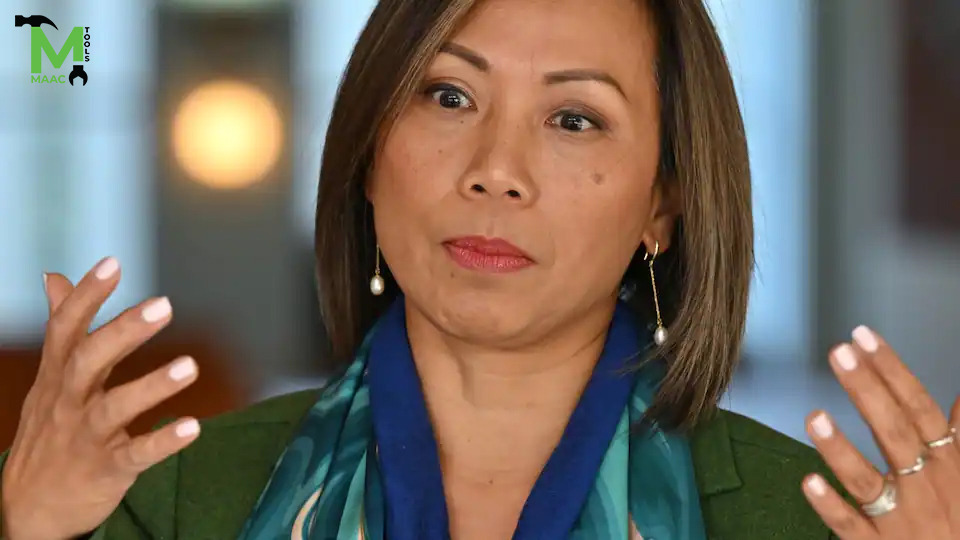Dai Le Thoughts and Journey to Australia
Dai Le thought she would die on her journey to Australia. She wants it to be easier for others to get here; As visa wait times balloon and thousands of people are left in limbo, the independent MP is urging for quick processing timeframes for refugees.
Together with her mother and two sisters, Dai Le fled the Vietnam War on a flimsy boat carrying hundreds of asylum seekers during the journey to Australia. She arrived in Australia as a refugee at age 11 after spending three years in camps in the Philippines and Hong Kong. She described how perilous that trek was to SBS News.
She said, “I believed we were going to die
“My mother is praying with her rosary and saying make sure you’re going to hold onto your sister if the boat tips over, and I thought if the boat tipped over there’s no way we’re going to hold onto anything because [there] was going to die because [there] was such a huge storm and none of us could swim,” the author said.
After around thirty years, the independent Fowler representative thinks it is more than ever that processing periods for migrants be greatly reduced.
She stated that there are still thousands of refugees who are housed in camps today.
“Every time I see them, I shake my head and wonder how we could have allowed those people to languish in camps for so long.”
Ms. Le stated that she will work to promote the relocation of more refugees and the reduction of processing times. She said that she would be amenable to Australia accepting refugees who arrived by boat. The current administration should “process them, make sure they fulfill
Prolonged Wait Times
Australia now has a yearly cap on the number of refugees it may accept at 13,750, plus an additional program for Afghan refugees that will provide 16,500 spots over the following four years.
More than 26,000 persons are presently awaiting word from the Department of Home Affairs regarding their status as refugees.
Waiting periods have exploded, according to Hannah Dickinson, the principal solicitor at the Asylum Seeker Resource Centre (ASRC).
When the Department aims for a 90-day turnaround, it will, in our experience, take one to three years for a decision to be made, Ms. Dickinson told SBS News.
the requirements, and if they satisfy the criterion as genuine refugees, I don’t see why they wouldn’t give them and make sure they get that settlement as swiftly as possible,” she said.
protesters at a rally in support of refugee rights held at Sydney Town Hall on July 24, 2022. Australia now has a yearly cap on the number of refugees it may accept at 13,750, plus an additional program for Afghan refugees that will provide 16,500 spots over the following four years. Source
She claimed that people who are currently in Australia on bridging visas, who have little or no access to healthcare, education, and other services, should be especially concerned.
If those who were denied protection file an appeal, the waiting period may be extended even more.
Ms. Dickinson Said;
“You’re looking at around two years to receive a ruling if you apply to the Administrative Appeals Tribunal, in addition to the original time you were already waiting,”
Access is “limited” and “challenging”
- Permanent protection can be requested primarily through, a journey to Australia, and Australia’s offshore and onshore programs.
- Onshore resettlement includes those who have flown into Australia on temporary or bridging visas in order to seek protection and apply for permanent visas.
- The offshore humanitarian program is for those who apply to be resettled in Australia after having their refugee status assessed abroad.
- The boat-turnback policy, which forbids asylum seekers from settling in Australia if they arrive by sea, has been maintained by the government.
- But Ms. Dickinson claimed that submitting an application from abroad is essentially impossible.
- She claimed that access to Australia’s offshore humanitarian program was extremely constrained and challenging.
Dai Le Claimed Australia’s Policy
She claimed that Australia’s policy is also “opaque” that those who would be denied refuge abroad might never be informed of the reason why, and that there are also fewer avenues for appeal. This may make it impossible for families that are split between different nations to reunite.
In order to enhance access to seeking refuge and accommodate the growing number of displaced persons, the ASRC is urging for more locations to be made available.
People who are eligible for visa grants won’t get them because Australia isn’t offering enough spots, according to Ms. Dickinson. “It doesn’t represent worldwide demand.”
It is crucial that the journey to Australia considers measures to enhance safe entry and intake so that those who need protection can get it.
According to Dai Le, it’s also important to make sure that refugees who are resettled on the journey to Australia have access to the resources and services they need to succeed.
She said that more than 10,000 refugees have found new homes in her own electorate of Fowler.
she said. I want to advocate for them to get a job, learn English, and get a good education so they can genuinely create a future for themselves, she said.

